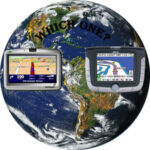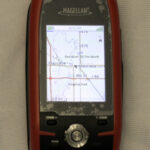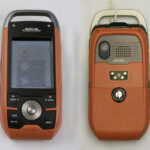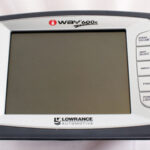I never thought I’d need a GPS receiver for my car, and I still don’t think I do, but it’s turned out that the TomTom One 130S GPS Receiver has been a great addition that has made it easier to find specific addresses and locations when I’m driving.
When I first started looking for a GPS, I only had three requirements: 1) it had to be relatively inexpensive; 2) I wanted voice navigation, even if I turned it off most of the time; and 3) I wanted something that wasn’t very big and easily fit on the windshield of my car. As I shopped, I settled on a few different TomTom and Garmin models. Then there was a price cut on the 130S and that is what convinced me to go with it since the difference between the various models was fairly small.
What is it?
The TomTom One 130S is a Global Positioning Service (GPS) device that receives signals from a network of satellites, which pinpoint your location down to a few meters. It uses that location information along with a database of maps for the United States to let you navigate practically anywhere. It turns out that the 130S is actually one of TomTom’s lower end models, but I think it packs a lot of functionality into its small package. You get a GPS that takes about a minute or less to mount on your windshield, lets you enter destinations quickly, provides step by step voice and/or visual instructions, has maps that can be constantly updated through a computer connection, has tons of points of interest pre-programmed into the device, and can calculate new routes on the fly should you miss a turn or not want to go in the direction the device is telling you to go.
Size and shape?
How big is this thing? It’s just under four inches wide, just over three inches high and an inch thick. It weighs less than seven ounces too. The screen, which takes up most of the front of the device is in full color too.
GPS Signals & Accuracy
Something I’ve noticed on some GPS units is that it takes forever to get a lock on satellites, not so on the 130S. The longest it has taken to connect to enough satellites in order to provide a location has been about a minute.
I have been very happy at how accurate the GPS location information and the map database in the 130S are. I have yet to come across an area where the maps don’t have information. Not only that, but even small deviations from the route show up on the device, telling you that the GPS locational lock is quite good.
Using the 130S
Before you start navigating across the country with your 130S, there are a few things you’ll have to do in order to update it and get it running. When you first turn it on the 130S will run through a setup diagnostic that ask you a few questions. Following that, you can connect it to your computer where you are entitled to one free update of the maps along with updates of the points of interest database along with some other information. The points of interest database can be updated whenever you want, but if you want further map updates you’ll have to pay for them.
It really doesn’t take much after your initial boot up to use the 130S. The mounting system is very easy. There’s a fold-out suction cup on the back of the 130S that you put on your windshield and then all you have to do is twist the locking mechanism to secure it to the windshield. From there, just push the on button and the 130S will run through it’s startup which takes less than a minute. Then you’ll have a location showing. Just tap the screen and you are brought to the navigation menu. You can navigate to a specific address, a point of interest or a city center. For the city center and address navigation, you’ll go into another screen where you can type in the State, City and address information. For the points of interest, you can browse through the database.
Typing in information on the 130S is fairly easy. I wish the on-screen buttons were slightly larger though since I found I often had to correct myself because I’d push the button next to the one that I wanted. There’s also the ability to customize just about everything on the 130S, including what kind of voice you want the unit to speak in. We’ve fiddled with these settings over time, but for the most part, the default settings are fine and you really don’t need to be twiddling with them.
Experiences
My big test of the TomTom 130S was on a trip to Myrtle Beach from the Boston area. Our friends had moved down there so we put in their address, a trip was calculated and we were off. The GPS navigated us there without any problem. It followed the major highways for the most part. The only place where I would have rather it guided us a different way was near the end, when it took us on some local roads instead of the highways. We used the voice navigation on in denser areas since it was nice to get the auditory warning about upcoming turns. For rural areas, we just turned off the speaker and followed the visual prompts.
Here at home in Boston I don’t use the 130S as much since I’m familiar with the roads, however when I’m heading somewhere that I don’t know so well, I bring the 130S with me, especially areas in Boston proper, which the 130S hasn’t had a problem with.
Another thing I like about the 130S is how portable it is. I don’t have to dedicate it to one vehicle. We can use it in either of our cars or if I’m driving with a friend and they don’t have a GPS, it is easy enough to hook up the 130S and be using it in their car.
In the end…
I think that the $130 that I spent on the TomTom One 130S was money well spent. The 130S has turned out to be a great device, especially when you need to navigate to a specific address that might be difficult to find on a map.
I heartily recommend the TomTom One 130S GPS if you are looking for an inexpensive but quality GPS unit.






